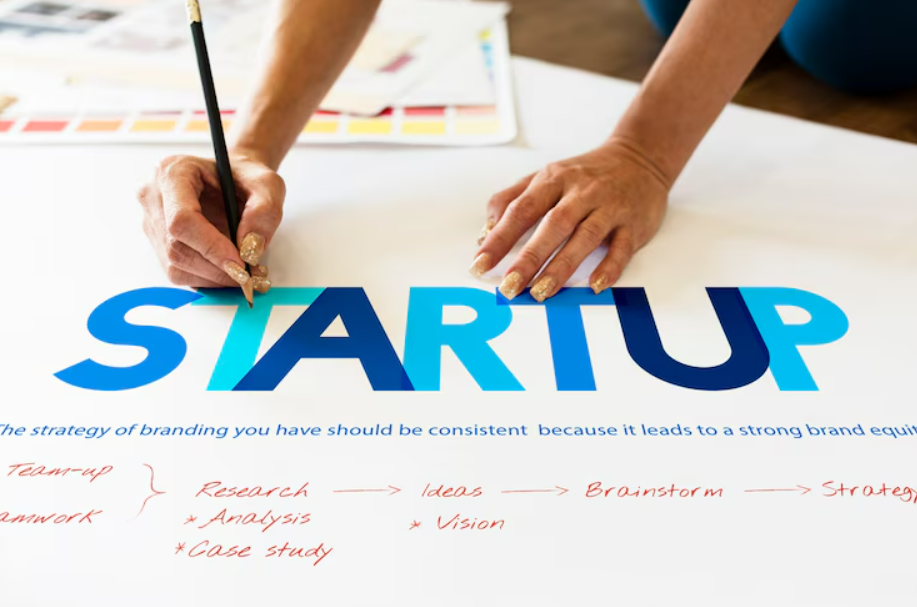Employer branding isn’t exclusive to large corporations—it’s equally vital for startups and scale-ups. In early-stage companies, where each new hire significantly impacts the business, establishing a compelling employer brand is key to attracting and retaining the right talent. It’s about clearly communicating what sets your organization apart and why top candidates should choose to join your team.
In this article, we’ll explore the fundamentals of employer branding, its importance, and how to build it effectively. From defining your Employee Value Proposition (EVP) the unique benefits and values your company offers to examining current trends and sharing actionable strategies, this guide is designed to help you get started.
What Is Employer Branding?
Employer branding refers to the strategic process of shaping how your organization is perceived as a place to work by both current employees and potential candidates. It involves cultivating a reputation that positions your company as an employer of choice, where people are proud to work. In today’s competitive talent market, a strong employer brand is not a luxury it’s a necessity for attracting and retaining high-caliber professionals.
Defining Your Employer Brand
Your employer brand represents your company’s identity in the eyes of your workforce and job seekers. It’s the authentic perception of your organization beyond your marketing or messaging efforts. Whether you actively manage it or not, your employer brand exists and influences how people engage with your organization. That’s why it’s critical to take control and align it with your company’s mission, values, and culture.
Why Employer Branding Matters
An effective employer branding strategy delivers tangible business benefits: it helps attract qualified talent, improves employee engagement, and significantly reduces turnover. Companies with a strong employer brand often report higher retention rates and enhanced performance. For startups and growing businesses, this can be a significant differentiator, allowing smaller teams to compete effectively in the talent marketplace.

Key Benefits of Employer Branding
1. Increase Retention and Minimize Turnover
Employer branding isn’t just about recruitment it directly influences employee satisfaction and loyalty. When team members feel aligned with your company’s purpose and values, they are more likely to remain engaged and committed.
A study by Glassdoor found that 69% of employees prefer working for organizations they feel proud to represent, while 86% avoid companies with poor reputations. A strong employer brand strengthens internal morale and keeps your best talent from looking elsewhere.
2. Attract High-Quality Candidates
Your employer brand serves as a beacon for job seekers. By showcasing your culture, values, and employee experience, you naturally draw candidates who are a good cultural fit reducing hiring costs and improving recruitment efficiency.
Research shows that 86% of candidates read company reviews before applying, and 95% consider an employer’s reputation a key factor in their decision-making process. With a compelling and well-articulated employer brand, your company becomes more than just another vacancy it becomes a sought-after opportunity.
Why Employer Branding Is Essential for Startups
For startups, employer branding can be the defining factor between building a high-performing, motivated team and struggling to attract top talent in a competitive market. With limited budgets, lower brand visibility, and the need to scale quickly, startups face unique recruitment challenges. That’s where a strong employer brand makes a critical difference:
Create a Competitive Advantage
While startups may not match the compensation packages of established companies, a compelling employer brand that highlights a dynamic mission, a flexible work environment, and career development opportunities can help level the playing field. It allows smaller companies to stand out and attract top-tier candidates.
Establish Credibility
Lacking widespread recognition, startups must work harder to earn candidates’ trust. A clear, authentic employer brand builds credibility and reassures potential hires about the stability and vision of your organization, making them more confident in joining an emerging venture.

Attract Mission-Aligned Talent
Success in startups often hinges on hiring individuals who believe in the mission and are committed to the journey. An effective employer brand communicates your purpose and values, drawing in candidates who are both passionate and aligned with your long-term goals.
Reduce Hiring Costs
Employer branding isn’t just about visibility—it also drives efficiency. A strong employer brand shortens time-to-fill and reduces cost-per-hire by attracting interested, pre-qualified candidates. Studies show that companies with robust brands can reduce hiring costs by up to 50%. While competitive compensation remains important, a compelling brand gives candidates reasons to join beyond salary—such as purpose, culture, and growth.
Drive Business Growth
Your people are your most asset. A strong employer brand attracts high-performing talent more quickly, fuelling business momentum. According to LinkedIn, companies with strong Talent Brand Index scores experience growth rates up to 20% faster than their peers. The message is clear: building your brand strengthens your ability to scale successfully.
Foster a Diverse Talent Pipeline
A visible and authentic employer brand reflects your commitment to inclusivity and values, attracting a broader and more diverse candidate pool. By consistently sharing your story across platforms—your website, social media, and beyond—you create a welcoming image that resonates with a wide range of candidates.
Enhance Consumer Trust and Loyalty
Employer branding influences more than recruitment—it shapes public perception. Research from CareerArc reveals that 64% of consumers stop purchasing from companies perceived to treat employees poorly. A strong employer brand reinforces a positive reputation, turning candidates into brand advocates—and even loyal customers.

How to Build a Successful Employer Branding Strategy
Creating an effective employer branding strategy involves thoughtful planning and consistent execution. Here’s a step-by-step guide to get started:
1. Conduct an Employer Brand Audit
Start by understanding how your company is currently perceived. Evaluate your online presence, candidate experience, and internal feedback to identify strengths and gaps. Collect insights from employees and recent applicants to compare internal perception with external reputation.
2. Define Your Employer Value Proposition (EVP)
Your EVP is the cornerstone of your employer brand. It outlines the unique benefits and experiences your company offers to employees. To develop a strong EVP:
- Emphasize standout features like flexibility, professional growth, and meaningful work.
- Ensure alignment with your company’s mission, vision, and values.
- Incorporate this messaging consistently across careers pages, job postings, and recruitment campaigns.
3. Design a Compelling Careers Page
Your careers page often serves as a candidate’s first impression—make it impactful. Incorporate compelling visuals, authentic employee testimonials, and a clear articulation of your company’s culture and core values. Aim to create a page that helps candidates envision themselves as part of your team and highlights what makes your workplace unique.
4. Launch a Multi-Channel Employer Branding Campaign
Leverage multiple platforms to extend the reach of your employer brand. Utilize channels such as LinkedIn, Glassdoor, Instagram, and others to create a consistent and engaging presence. Blend video content, blog articles, behind-the-scenes insights, and interactive experiences to tell a richer, more authentic story about your organization.
5. Activate Employee Advocacy
Your employees are your most credible brand ambassadors. Empower them to share their genuine experiences through social media, internal blogs, testimonials, or formal advocacy programs. Candid, employee-led storytelling builds trust and enhances your employer brand in ways no corporate messaging alone can achieve.

The Role of Employee Engagement in Employer Branding
Engaged employees are among the most powerful assets in strengthening your employer brand. By embedding branding principles into employee training and engagement strategies, you ensure that your team not only understands your values but actively represents them. Effective approaches include:
- Implementing consistent recognition and reward programs
- Facilitating transparent communication through regular town halls and team updates
- Encouraging employee-driven innovation through collaborative brand-building sessions
For startups especially, engagement initiatives—such as equity-sharing programs—can significantly enhance employee commitment and retention, as highlighted in Why Shares for Employees Increases Employee Retention.
Six Practical Ways to Inspire Team Engagement with Your Brand
1. Integrate Brand Values into Onboarding
Brand engagement starts on day one. Use the onboarding process to immerse new hires in your company’s mission, vision, and core values. Sharing brand assets such as logos, typography, and color schemes early helps create alignment from the start.
Best Practice:
Host onboarding sessions that explore brand identity. Open discussions on what makes certain brands memorable to spark conversations around your own company’s brand purpose.
2. Involve Employees in Brand Evolution
Encouraging team input fosters a sense of ownership. Invite employees to contribute feedback and ideas that shape your brand narrative. This collaboration ensures the brand reflects a collective identity.
Best Practice:
Use team surveys, Slack channels, and cross-functional brainstorming sessions to gather input. Incorporating frontline insights builds authenticity into your brand.
3. Reinforce How Every Role Shapes the Brand
A strong brand is experienced through every touchpoint. Help employees understand the impact of their work—from sales to support—and how it contributes to brand perception.
Best Practice:
Provide brand guidelines and enable employees to share their expertise via blogs, podcasts, or events. This reinforces both personal and company branding while maintaining message consistency.

4. Ensure Easy Access to Brand Resources
To maintain engagement, eliminate barriers to participation. Centralized, user-friendly access to brand tools empowers employees to contribute confidently and consistently.
Best Practice:
Implement a digital brand hub containing logos, templates, and visual assets. Allow for easy customization to meet individual needs without compromising brand consistency.
5. Foster Emotional Connections to the Brand
Employees who feel personally connected to a brand are more likely to advocate for it. Reinforce your brand values through daily practices and decisions.
Best Practice:
Celebrate team milestones and highlight how actions align with company values. For distributed teams, create moments of connection through shared experiences and inclusive communication.
6. Keep the Brand Visible Every Day
Whether your team is remote or in-office, subtle brand reminders create lasting impressions. Visual cues can strengthen daily engagement and a sense of belonging. Best Practice:
Provide new hires with welcome kits featuring branded items. Use brand colors and patterns in physical or digital workspaces to keep the brand top-of-mind.
From Employee to Brand Advocate
You don’t need massive budgets or celebrity campaigns to build a powerful brand presence. Your employees are your most authentic and influential advocates. Their genuine voices can amplify your brand far more effectively than any paid promotion.
Why Employees Are Your Strongest Advocates
Authenticity resonates. A personal story from an employee often holds more weight than corporate messaging. In fact, research shows that employee-generated content receives 10 times more engagement than posts from company accounts.
When employees share their experiences, they humanize your brand and build trust with potential hires, partners, and even investors.
The Startup Advantage: Why Advocacy Matters
Employee advocacy offers clear benefits, especially for startups:
- Stronger Talent Attraction: Engaged teams signal a thriving culture to potential candidates.
- Wider Reach: Employees’ personal networks often extend your brand’s visibility.
- Higher Retention: Advocacy builds loyalty and a deeper connection to company success.
- Increased Credibility: People trust people—not faceless corporate messages.
Startup-Friendly Advocacy Strategies
You don’t need a perfect strategy to start—just one that feels real. Here are some cost-effective ways to activate employee advocacy:
- Spotlight Individual Stories: Feature team members across blogs, newsletters, and social media.
- Celebrate Wins Publicly: Recognize achievements, big and small, and make them share-worthy.
- Gamify Participation: Create friendly competitions or incentives around content sharing and brand engagement.

Employer Branding Techniques & Tools for Startups
Establishing a strong employer brand is a strategic advantage in today’s competitive talent landscape—especially for startups. With the right approach and accessible tools, you can build a compelling employer brand without straining your budget.
Budget-Friendly Tools to Elevate Your Employer Brand
Effective employer branding doesn’t require a large budget. These cost-effective tools can help startups make a strong impression:
- Canva: Ideal for creating branded visuals, social media content, and event collateral.
- Google Analytics: Track engagement and understand which branding efforts resonate most with your target audience.
- Social Media Platforms (LinkedIn, Instagram, TikTok): Share authentic behind-the-scenes content, employee highlights, and company culture moments while tracking interaction and reach.
Leverage Virtual Events to Showcase Culture
Virtual meetups, Q&As, and webinars provide valuable opportunities to engage potential candidates. These events allow you to:
- Communicate your mission and values in real time.
- Offer insights into team dynamics and work culture.
- Create genuine touchpoints with your employer brand.
Hosting Effective Brand Events
A well-executed brand event leaves a lasting impression. To ensure success:
1. Define Clear Objectives and Audience
Start with a solid understanding of your event’s goal—whether it’s talent attraction, product awareness, or lead generation. Tailor your event around what your audience values most.
2. Align Theme and Venue with Your Brand
Choose a theme that reinforces your brand identity. Then select a venue—virtual or physical—that enhances the theme, suits your audience, and delivers a cohesive experience.
3. Promote Strategically
Use a blend of digital channels—social media, email newsletters, your website—and offline methods (e.g., flyers, posters) where appropriate. Keep messaging concise and action oriented.
4. Build a Dynamic Agenda
Balance value-driven content with networking and interactive elements. Use creative formats to highlight your products, culture, or values in memorable ways.
5. Execute with Precision and Follow Up
Ensure smooth operations on event day, supported by a prepared team. Post-event, thank participants, share key takeaways, and assess performance against your goals.

Branded Merchandise: A Powerful, Tangible Touchpoint
Strengthen Brand Identity
Branded merchandise turns your values and personality into something physical. Whether it’s a hoodie or a custom notebook, these items extend your brand into daily life—sparking recognition and emotional connection.
Cost-Effective, Long-Term Exposure
Unlike paid ads, merchandise has staying power. A well-designed item can reinforce your brand for months or even years, offering high visibility at a low cost.
Enhance Company Culture
Internally, branded items cultivate team pride and belonging. Employees who wear or use company merchandise often feel more connected to the company’s purpose—and are more likely to champion it externally.
Deepen Customer & Client Relationships
Thoughtful branded gifts, whether as giveaways or thank-you tokens, strengthen relationships and leave a lasting impression. They also activate the principle of reciprocity, encouraging continued engagement.
Virtual Team Events: Culture in Action
Activities like online games, virtual workshops, or collaborative challenges can reinforce internal bonds while doubling as an employer branding opportunity. Inviting candidates to participate helps them experience your team dynamic firsthand.
Video Marketing: Bring Your Brand to Life
Video is one of the most compelling formats for employer branding. Use it to:
- Share authentic employee stories and testimonials
- Offer virtual office tours and behind-the-scenes content
- Demonstrate what sets your culture apart
When shared across social platforms, career pages, or job listings, video content increases transparency and trust—and supports broader employee advocacy efforts.
Enhancing Your Employer Brand: Strategies for Ongoing Improvement
A strong employer brand requires continuous attention and refinement. To remain competitive in attracting top talent, companies must regularly evaluate and evolve their branding efforts. Here are keyways to strengthen your employer brand over time:
- Refresh your employer branding content frequently to ensure it remains relevant and aligned with your evolving culture.
- Provide employer branding training for HR teams and leadership to ensure consistent messaging and strategic alignment.
- Experiment with new branding approaches to keep your campaigns innovative and engaging.

10 Actionable Tips to Strengthen Your Employer Brand
1. Streamline the Application Experience
Remove friction from your hiring process. Avoid redundancies like asking candidates to upload a resume and then manually input the same information. A simplified, user-friendly experience leaves a lasting, positive impression.
2. Optimize Your Careers Page
Your careers page is a key branding touchpoint. Keep it concise, visually engaging, and focused on showcasing your culture, values, and benefits. Take inspiration from companies like Phunware, whose streamlined approach delivers impact with clarity.
3. Leverage LinkedIn’s Banner Effectively
The banner on your LinkedIn Company Page is prime branding space. Use it to highlight key achievements, awards, or campaigns. For example, Stryker uses its banner to showcase its “World’s Best Workplace” recognition—reinforcing credibility and purpose in one glance.
4. Highlight Flexible Work Arrangements
Flexibility is a top priority for today’s workforce. Clearly communicate remote, hybrid, or flexible work options across your careers site and LinkedIn profile. Utilize LinkedIn’s workplace policy feature to reinforce your commitment to modern work-life balance.
5. Communicate Core Values Clearly
Candidates want to align with companies that stand for something. Use platforms like LinkedIn’s Commitments section to spotlight initiatives in DEI, sustainability, and community engagement. Authentic content such as employee stories, reports, and videos builds trust and engagement.
6. Emphasize Meaningful Benefits
Go beyond standard benefits. Showcase unique offerings like student loan repayment assistance, extended parental leave, or learning and development programs. These differentiators help position your organization as one that genuinely supports employee well-being.
7. Feature Employee-Generated Content
Real employee voices lend authenticity to your brand. Encourage team members to share their experiences through blogs, videos, or social media. For example, Epic’s “Sabbatablog” gives employees a platform to share stories from their sabbaticals—bringing company perks to life.
8. Gather Feedback Throughout the Hiring Journey
A seamless hiring process boosts your employer brand. Use quick feedback surveys at key stages of recruitment to identify areas for improvement. Acting on candidate input demonstrates your commitment to continuous enhancement.
9. Acknowledge and Appreciate Candidates
A simple thank-you—whether automated or personal—goes a long way. Showing appreciation after interviews reflects professionalism and can significantly improve candidate perceptions.
10. Promote What Sets You Apart
Don’t be afraid to spotlight the unique aspects of your culture or policies. A single announcement—such as Airbnb’s popular “work-from-anywhere” policy—can generate massive engagement and interest. Consistent, genuine storytelling builds long-term brand equity.

Final Thoughts
Building a compelling employer brand is not a one-time effort—it’s an ongoing strategy that evolves with your business. By investing in your Employee Value Proposition (EVP), staying ahead of employer branding trends, and leveraging the right branding tools and platforms, you can establish your organization as an employer of choice in a competitive market.
